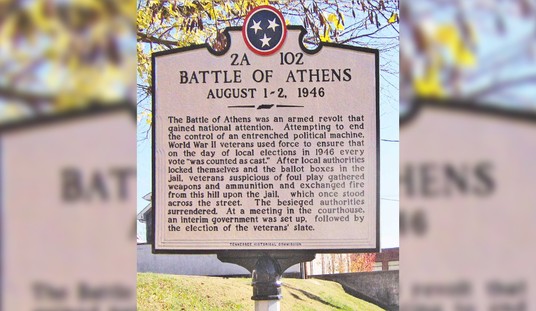The Violence Policy Center (VPC) recently issued a press release titled “States with Higher Gun Ownership and Weak Gun Laws Lead Nation in Gun Death.” This included a list of 10 states highlighting a purported link between “weak” gun control laws and the total “gun death rate,” implying that states with “weak” laws have more “gun death.” VPC also included a reference to the “household gun ownership” levels in each state, underlining VPC’s belief that “strong” gun laws (i.e. more gun control) correlate with drastically reduced gun ownership rates. Therefore, VPC’s criteria is that guns are a vital causative factor in creating death. Their press release confirms this conclusion:
VPC Legislative Director Kristen Rand states, “The equation is simple. More guns lead to more gun death, but limiting exposure to firearms saves lives.”
For their gun ownership data, VPC cited the 2002 Behavioral Risk Factor Surveillance System (BRFSS) survey from an article originally published in 2005 in the journal Pediatrics. The BRFSS is “operated by state health departments in collaboration with the US Centers for Disease Control and Prevention,” a department in the Centers for Disease Control (CDC).
Calling this “the most up-to-date, comprehensive source for state gun ownership rates,” VPC attempted to match this 2002 survey data with 2007 firearms mortality data from the CDC, which immediately invalidates their dataset.
When asked to define this “apples and oranges” comparison of two unrelated datasets, Carl Moody, economics professor at William and Mary, called it a “screw-up.”
To give VPC a fair opportunity to make their point with properly-collated data, this report cites 2002 CDC mortality and FBI violent crime data. But first, VPC committed another sophomoric error which must be addressed.
The American Association for Public Opinion Research defines the “margin of sampling error” (MOSE) as:
Basically, the margin of sampling error is the price you pay for not talking to everyone in your population group. The MOSE describes the range that the answer likely falls between if we had talked to everyone instead of just a sample.
In other words, deleting most of a dataset in their press release enabled VPC to “cherry-pick” data that “proved” their predetermined conclusion that firearms represent a negative value to society.
By using less than 20% of the entire dataset, shown in Table 1, VPC makes its point that “weak” gun laws (less gun control) correlate with higher rates of total firearms death — more than four times as much — and higher rates of homicides using firearms (more than triple). Also, “weak” gun law states have over 4.5 times higher firearms suicide rates. Violent crime rates support VPC’s allegation: “weak” gun laws lead to more crime. (All rates are defined as incidents per 100,000 population.)
| Table 1: CDC Firearms and Non-Firearms Death Rates (2002), VPC States | ||||||||
| Total | Homicide | Suicide | FBI | |||||
| Gun | Non-gun | Gun | Non-gun | Gun | Non-gun | Violent
Crime |
Hom. | |
| VPC “Strong” states | 4.14 | 39.42 | 1.91 | 1.63 | 2.13 | 5.58 | 368.5 | 3.1 |
| VPC “Weak” states | 17.98 | 58.39 | 6.72 | 2.86 | 10.17 | 4.78 | 531.4 | 8.5 |
| Percent Difference | 334.0 | 48.1 | 251.6 | 75.6 | 376.5 | -14.3 | 44.2 | 173.7 |
(Note: CDC and FBI homicide rates are different because each agency gathers data from different sources. The CDC collects information from death certificates, usually prepared by “attending physicians, medical examiners, and coroners.” The FBI gets their information from law enforcement agencies.)
While VPC cites household gun ownership rates in their press release, they exclude these values on the webpage containing their complete table of 2007 CDC firearms mortality rates, which curiously says “All contents © 2005 Violence Policy Center” on the bottom. Even more telling, VPC excludes the District of Columbia, which has the lowest gun ownership, yet has a higher rate of “gun death” than any state, according to both the CDC and the FBI.
One attribute VPC’s “weak” states have in common is that they are all right-to-carry (RTC) states, where law-abiding citizens have a broad right to carry concealed handguns in public, whereas four of their five “strong” gun law states are not RTC. VPC confirms this criteria in their press release:
The VPC defined states with “weak” gun laws as those that add little or nothing to federal restrictions and have permissive laws governing the open or concealed carrying of firearms in public. States with “strong” gun laws were defined as those that add significant state regulation in addition to federal law, such as restricting access to particularly hazardous types of firearms (for example, assault weapons), setting minimum safety standards for firearms and/or requiring a permit to purchase a firearm, and restrictive laws governing the open and concealed carrying of firearms in public.
Following VPC criteria, states are categorized by RTC status in Table 2.
Table 2: Firearms and Non-Firearms Death Rates (2002), All States |
||||||||
| Total | Homicide | Suicide | FBI | |||||
| Gun | Non-gun | Gun | Non-gun | Gun | Non-gun | Violent
Crime |
Hom. | |
| Non-RTC states | 9.67 | 45.77 | 4.48 | 2.25 | 4.81 | 5.41 | 503.5 | 6.6 |
| RTC states | 12.76 | 52.14 | 3.55 | 1.91 | 8.48 | 5.21 | 394.1 | 4.7 |
| Percent Difference | 31.9 | 13.9 | -20.7 | -15.3 | 76.5 | -3.7 | -21.7 | -28.2 |
Examining the entire dataset, VPC’s “weak” gun law states (RTC) still have higher rates of total firearms death (31.9%), but not the 4+ times difference shown in Table 1. RTC states also have higher rates of non-firearms death (13.9%) but again, far less than in Table 1, indicating that there are other causative factors besides guns. Firearms suicide rates are 76.5% the rates in VPC’s “strong” states (non-RTC), but not over 4.5 times higher as in Table 1. Comparison of Tables 1 and 2 underscores VPC’s sampling error.
Most importantly, when it comes to homicide and overall violent crime, Table 2 reveals what VPC wanted to hide. Where “weak” states (RTC) had much higher murder and violent crime rates in Table 1, the full dataset shows that they are safer: 20.7% lower firearms homicide and 15.3% lower non-firearms homicide rates. Moreover, RTC states averaged 21.7% less violent crime and 28.2% lower homicide rates, according to the FBI.
Table 3 reinforces this negative correlation between gun ownership and violent crime: As gun ownership increases, violence decreases.
| Table 3: Percent Gun Ownership vs. FBI Crime Rates | ||
| % Gun Ownership | Violent Crime | Homicide |
| <30 | 599.7 | 8.2 |
| 30 to <40 | 422.4 | 5.0 |
| 40 to <50 | 406.5 | 4.8 |
| 50+ | 314.8 | 3.9 |
While VPC wishes to look only at negatives, this highlights the truth that the gun rights issue is a balanced equation: There are benefits to gun ownership, as well as negative consequences for enacting gun control laws.
Bottom line: Firearm-involved suicides drove the difference in “gun death” rates between VPC’s “strong” and “weak” gun law states. Since they insist the equation is “simple,” that increased firearms ownership causes more suicide, VPC’s own data proves that more guns in the hands of law-abiding citizens causes less crime.









Join the conversation as a VIP Member